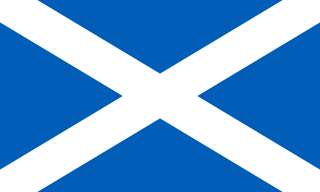Edinburgh Leith was a burgh constituency of the House of Commons of the Parliament of the United Kingdom from 1950 to 1997. It elected one Member of Parliament (MP) by the first past the post system of election.

East Dunbartonshire was a county constituency of the House of Commons of the Parliament of the United Kingdom (Westminster). It elected one Member of Parliament (MP) by the first past the post system of election. The seat is possibly best known for formerly being the constituency of Jo Swinson, the former Leader of the Liberal Democrats who was defeated at the 2019 general election.

Aberdeen South is a burgh constituency of the House of Commons of the Parliament of the United Kingdom which elects one Member of Parliament (MP) by the first-past-the-post system of election.

Aberdeen North is a burgh constituency of the House of Commons of the Parliament of the United Kingdom and it elects one Member of Parliament (MP) by the first past the post system of election. It was first used in the 1885 general election, but has undergone various boundary changes since that date. The seat has been held by Kirsty Blackman of the Scottish National Party since 2015.

West Dunbartonshire is a county constituency of the House of Commons of the Parliament of the United Kingdom. It elects one Member of Parliament (MP) by the first past the post system of election and covers the same area as the county of West Dunbartonshire.
Dunfermline was a county constituency of the House of Commons of the Parliament of the United Kingdom from 1974 until 1983.
Roxburgh, Selkirk and Peebles was a county constituency of the House of Commons of the Parliament of the United Kingdom (Westminster) from 1955 to 1983. It elected one Member of Parliament (MP) by the first past the post voting system.
Dunbartonshire was a county constituency of the House of Commons of Great Britain from 1708 to 1801 and of the House of Commons of the Parliament of the United Kingdom from 1801 to 1950.
Kinross and Western Perthshire was a county constituency of the House of Commons of the Parliament of the United Kingdom from 1918 until 1983, representing, at any one time, a seat for one Member of Parliament (MP), elected by the first past the post system of election.
Perth and East Perthshire was a county constituency of the House of Commons of the Parliament of the United Kingdom from 1950 to 1983. It elected one Member of Parliament (MP) by the first past the post system of election.
EastAberdeenshire was a Scottish county constituency of the House of Commons of the Parliament of the United Kingdom from 1868 to 1918 and from 1950 to 1983. It elected one Member of Parliament (MP) by the first past the post system of election.
WestAberdeenshire was a Scottish county constituency of the House of Commons of the Parliament of the United Kingdom from 1868 to 1918 and from 1950 to 1983. It elected one Member of Parliament (MP) by the first past the post system of election.

Roxburgh and Berwickshire was a county constituency of the House of Commons of the Parliament of the United Kingdom (Westminster) from 1983 to 2005. It elected one Member of Parliament (MP) by the first-past-the-post voting system.
Inverness was a county constituency of the House of Commons of the Parliament of the United Kingdom from 1918 until 1983. It elected one Member of Parliament (MP) by the first-past-the-post system of election.
Kilmarnock was a county constituency of the House of Commons of the Parliament of the United Kingdom from 1918 to 1983. It elected one Member of Parliament (MP) by the first past the post system of election.

Scottish Westminster constituencies were Scottish constituencies of the House of Commons of the Parliament of Great Britain, normally at the Palace of Westminster, from 1708 to 1801, and have been constituencies of the House of Commons of the Parliament of the United Kingdom, also at Westminster, since 1801. Constituency boundaries have changed on various occasions, and are now subject to both periodical and ad hoc reviews of the Boundary Commission for Scotland.
Greenock and Port Glasgow was a burgh constituency of the House of Commons of the Parliament of the United Kingdom from 1974 until 1997, electing one Member of Parliament (MP) by the first past the post system of election.

The results of the First Periodical Review of the Boundary Commission for Scotland became effective for the 1955 general election of the House of Commons of the Parliament of the United Kingdom (Westminster). The review defined 32 burgh constituencies (BCs) and 39 county constituencies (CCs), with each electing one Member of Parliament (MP) by the first past the post system of election. Therefore, Scotland had 71 parliamentary seats.
The results of the Second Periodical Review, concluded in 1969, and a subsequent interim review, concluded in 1972, of the Boundary Commission for Scotland, became effective for the February 1974 general election of the House of Commons of the Parliament of the United Kingdom (Westminster). The reviews defined 29 burgh constituencies (BCs) and 42 county constituencies (CCs), with each electing one Member of Parliament (MP) by the first past the post system of election. Therefore, Scotland had 71 parliamentary seats.

The results of the Third Periodical Review of the Boundary Commission for Scotland were implemented for the 1983 general election of the House of Commons of the Parliament of the United Kingdom (Westminster).